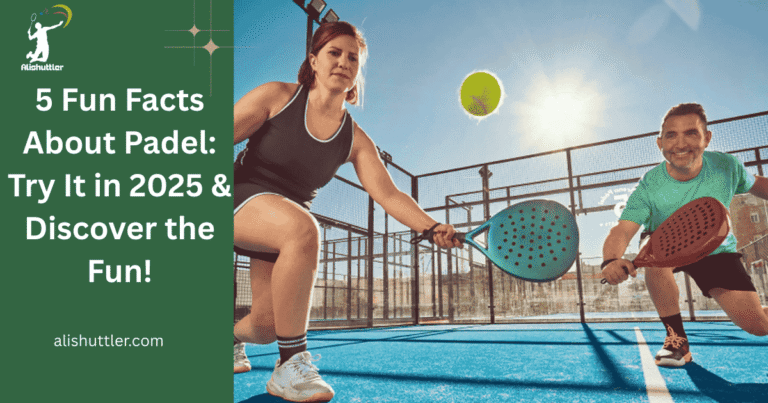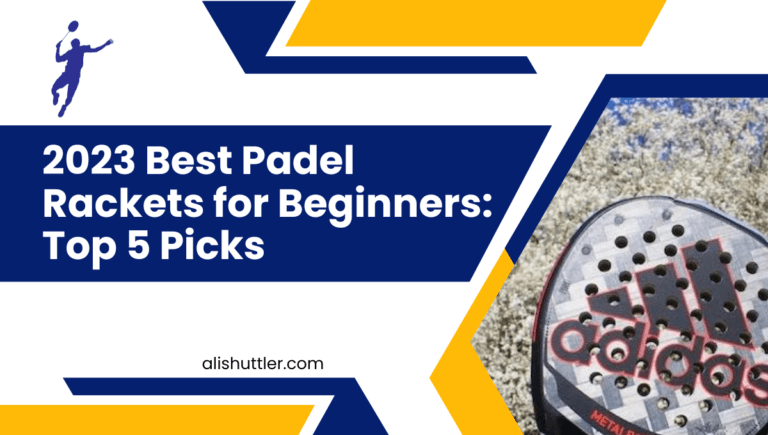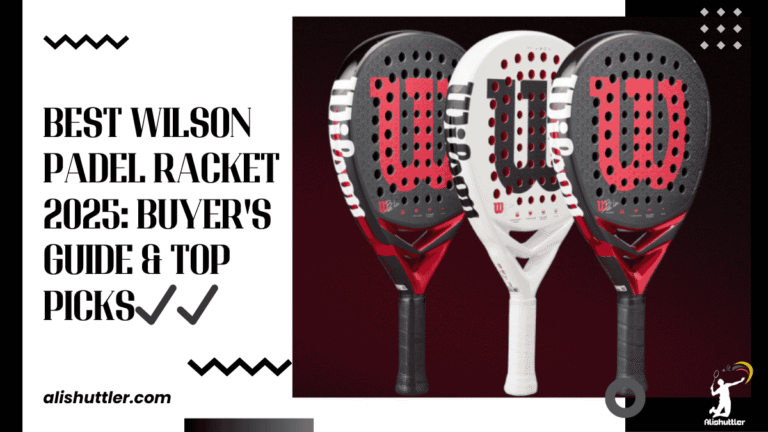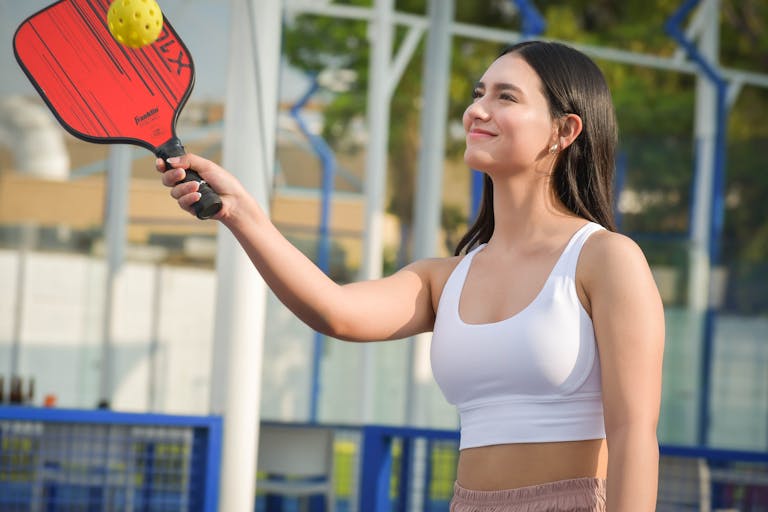Paddle tennis courts are smaller than standard tennis courts, measuring 15.24 meters by 6.10 meters. The nets are 0.91 in the center. The surrounding walls or screens frequently constitute part of the court, influencing the style of play.

Courts utilize various surfaces, such as concrete or synthetic turf, for all-season play. If you want to know what these courts bring to the table and how they mold paddle tennis, see details down.
What is Paddle Tennis?
Paddle tennis is a racquet sport that combines elements of tennis, squash, and racquetball. Played for over a hundred years, it’s known for its diminutive, walled courts, solid paddles and distinctive ball. The game is primarily a doubles 4-player game.
Paddle tennis is extremely popular in Spain and Hispanic America, yet has a loyal, growing following around the world. With its straightforward regulations and approachable play, it welcomes enthusiasts of every caliber to participate.
1. The Court
The paddle tennis court is 13.4 meters by 6.1 meters (44 by 20 feet) – much smaller than a normal tennis court. With designated service boxes and doubles alleys, all enclosed by a tall fence or glass walls that maintain the ball’s playability and define the rhythm of every match.
The court surface is typically concrete, artificial grass or a synthetic material to facilitate rapid movement and reduce slipping. The cage is a centerpiece–it allows players to play off the walls for rebounds, extending rallies and opportunities for inventive shots.
2. The Racket
The most noticeable difference in paddle tennis equipment is that its paddle tennis rackets are solid and stringless as opposed to tennis rackets. Popular choices are fiberglass, carbon fiber, or composite mixtures.
This design provides players increased control and allows them to strike the ball with greater accuracy, even from difficult positions. The right paddle can transform your game – some heavier for power, others lighter for rapid-fire maneuvers.
3. The Ball
A paddle tennis ball is a low-pressure rubber ball smaller than a tennis ball and with tiny holes for aeration. This causes it to bounce less and move slower, which is ideal for the reduced court size and proximity of play.
Because paddle tennis balls don’t go as far or as fast as tennis balls, rallies last longer. It’s always essential to play with the right ball, not only for fairness but to keep the competitions authentic to the sport.
4. The Rules
Players serve underarm from behind the baseline and get one serve per point. Serves change from deuce to ad courts. Scoring is very similar to tennis, however some of the specifics are different.
The volley zone, by the net, eliminates smashes and requires soft hands. Fouls consist of double bounces, net touches, or going over the baseline on a serve.
5. The Difference
Paddle tennis courts are more compact, shorter and narrower with a lower net. The enclosed court allows players to utilize walls for intelligent, angled shots.
Doubles makes it more social, and the rules—underarm serving, one serve, etc.—differentiate it from tennis. Scores are kept the same way, but the smaller space alters the sensation of every point.
Court Dimensions
Paddle tennis courts have specific dimensions that dictate how the game is played. A regulation padel court is 20m x 10m, with a net dividing the expanse in two. These dimensions are mandated for all competitive levels, because standardization maintains fairness and allows athletes to practice in consistent environments.
For tournaments, these dimensions are non-negotiable. It’s the standard for regulation play. These deviations can impact scoring, player safety and the overall pace of matches. Recreational facilities might utilize altered sizes to accommodate spaces, but for pro games, worldwide standards are adhered to.
Playing Area
The playing surface of a padel court is 20m x 10m. This rectangle is smaller than a tennis court, making matches zippier and more dynamic. Singles and doubles are played on the same size court, so positioning and teamwork matter a lot.
The court dimensions facilitate fast-paced rallies and focus on reflexes and anticipation. With less court to cover than tennis, players must be quick to respond and attentive. Lines have to be precise, because one little boo-boo can alter the trajectory of a point. Marking maintenance is necessary to ensure fair play and provide clear visual cues during competition.
Wall Height
Padel courts are special because of their walls. The back walls are 3 metres high. Side walls begin at 3 meters and step down to 2 meters as they approach the net. A few courts have higher enclosures, up to 4 meters, primarily to maintain the ball in play during fierce exchanges.
These stepped walls, usually glass, assist players in utilizing rebounds as a strategic component. Consistency of wall height on all sides is the secret to predictable play and shot-making. Indoors, ceiling needs to be at least 6 meters so as not to interfere with high lobs or deep shots.
Net Height
The paddle tennis net is 0.88 meters high in the center and 0.92 meters at the posts. That little curve makes it fair and a good challenge for offense and defense shots. The net’s height affects serves and volleys, particularly on quick exchanges.
Good net tension is key for clean bounces and consistent ball response. If the net is too loose or too tight, it can impact scoring and the pace of the game. This has to be checked regularly before every match.
Service Lines
The service line is 6.95 m from the net. This divides the court into service boxes, directing where the ball has to land in a serve. The directions dictate provisions and player body positions, leaving space for both strength and position.
True marking is extremely important in competitive matches and helps prevent conflicts. Unlike tennis, the padel service line is nearer the net, altering the angle and manner of serves. Defined service areas keep play fluid and equitable for all players.
Court Construction
Constructing a paddle tennis court requires thoughtful consideration, excellent planning and a forward-thinking mindset towards longevity and player protection. Courts have to adhere to strict regulations, with specifics such as a 10 x 20 meter playing area, a larger construction footprint for security and access and an indoor/outdoor option.
From site prep to selecting hard-wearing materials and adhering to regulatory standards to promote fair play and longevity, there are several key factors to consider.
- Site selection and leveling for even play
- Drainage systems to prevent water buildup
- Choosing surface materials for durability and comfort
- Walls and fencing for gameplay and safety
- Lighting for visibility, including night use
- Compliance with international size and safety standards
- Ongoing maintenance and regular inspections
Surface
| Surface Type | Benefits |
|---|---|
| Synthetic Grass | Softer on joints, good grip, steady bounce |
| Concrete | Long-lasting, low upkeep, quick install |
| Asphalt | Smooth, consistent, easy to resurface |
Synthetic grass holds out for player comfort, providing a padded sensation and reliable traction. This reduces fatigue and minimizes injury risk, which is crucial for athletes of all ages.
Other surface options such as concrete or asphalt are prized for their durability and ease of maintenance, therefore making them suitable for high traffic or inclement environments. The kind of surface alters the ball’s bounce. Grass deadens the ball and softens play, while concrete and asphalt quicken things up.
This changes the way players run and shoot. Maintaining crack-free and clean surfaces is crucial. The majority of courts require resurfacing every three to five years in order to keep play fair and safe.
Walls
Glass, concrete, and metal mesh are typical for paddle tennis walls. Glass illuminates and preserves sightlines for spectators. Metal mesh, sometimes 3 meters in height, is sturdy and allows air to flow through, aiding in weather resistance.
Walls are beyond partitions. They define how shots ricochet and allow players to leverage angles. A mighty wall provides a genuine rebound, thereby keeping games honest.
Longevity counts. Courts require walls which resist play and weather. Routine inspections and repairs prevent minor issues from becoming major. Certain courts incorporate padding or rounded corners to reduce injury risks and increase comfort.
Fencing
Fencing, typically heavy-duty steel mesh, contains balls in play and outlines the court perimeter. It should be tall—frequently equal to the height of the wall—to aid in security and maintain flow of play.
Heavy-duty fence prevents damage from weather and hard cone hits. Proper setup means posts are firm, mesh is tight, and gates operate smooth! Nice fences shouldn’t obstruct fans’ view or make players feel trapped.
Installation of fencing is important. It has to withstand wind, rain and sun, which requires rust-proof paints and secure fixings. Quality install work slices long-term costs and keeps the court safe.
Lighting
Good lighting counts for batters’ eye clarity, day or night. LED and metal halide systems are both employed, with LEDs gaining ground for their long life and low power consumption.
Lighting should disperse evenly without any harsh spots or shadows. Clear, consistent lighting allows players to see the ball and each other, resulting in games that flow better and are more equitable.
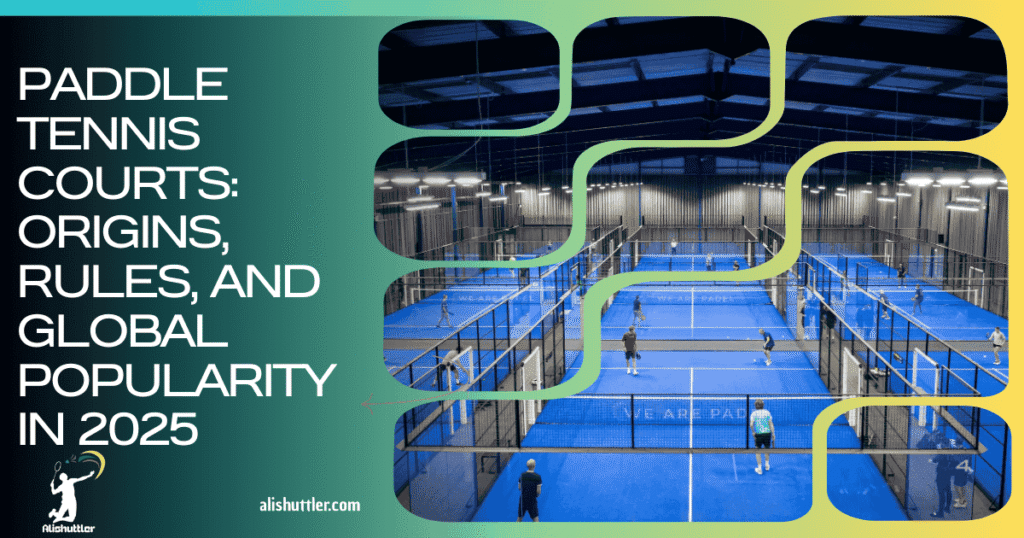
LEDs consume less power, reduce operational costs and are more eco-friendly. Furthermore, adding timers or motion sensors saves even more power, which helps both the wallet and the planet.
The Playing Experience
Paddle tennis offers a vibrant, fast-paced game that relies on ability, agility, and smart strategy. The courts are enclosed, so balls bounce off glass and mesh walls, keeping play non-stop and fast. It’s a smaller court just 20×10 metres, keeps everyone close and the action tight.
Scoring is the same as regular tennis, with tiebreaks and games, but padel adds its own twists—serves are underarm and your side gets a point if the ball bounces twice, hits the net or outside the court. This arrangement leaves games bristling with shifts and demanding of nimble feet and intelligent decisions.
Strategy
Padel is easy to learn, but there’s nuance in playing every shot. Shot placement is key as the court is smaller and walls are constantly in play. Players need to plan moves in advance, utilizing lobs, volleys, and drop shots to position opponents out of reach.
For instance, a soft lob can send an adversary scrambling backwards, while a low volley can trap them by the net. Doubles is the standard, so collaboration is important. Teams of two, overlapping and switching spots to keep the court closed off.
The cramped quarters means you can’t just smash and pray. Instead, you triumph by randomizing your shots, shuffling as a team, and predicting your competitor’s next move. Veterans look for openings and lay traps, like pulling skip to the net, then lobbing a deep drive around them.
With no overhead serves, serving to start the point is about control, not power, and every point matters—particularly when a golden point can shift the set.
Socializing
Padel unites, be it at friendly matches or in club tournaments. Being doubles makes it uncommon to play solo, so you’re always sharing the court. Clubs run leagues and fun events where anybody can come along and participate, learn and compete at their own pace.
You make new friends, build networks – every session. Countless players play for the game, but stay for the community. Social events and club nights keep players engaged and make padel more than a sport — it’s a means to connect with people and belong to a community.
Accessibility
- Played by all ages and skill levels
- Minimal equipment needed: just a paddle and ball
- Courts found in city parks, clubs, sports facilities
- Adaptable for beginners and experienced players
- Rules allow play for people with limited mobility
- Clubs offer coaching for youth, adults, and seniors
Padel courts are sprouting up everywhere, from major metropolitan areas to tiny villages, typically within multi-sport clubhouses or local parks. The game is open to everyone, and numerous clubs aim to integrate disabled individuals, providing modified training sessions and tournaments.
Inclusion is a focus, to make padel open and fun for every background.
Global Rise
Paddle tennis, popularly branded as padel, has experienced a rapid global growth in the last ten years. Today, some 30 million people play padel globally, and the sport continues to expand into new markets rapidly. The number of padel courts increased by 26% in 2023 alone, showcasing its rising popularity.
The sport took off in Mexico in the 60’s, but Spain now dominates as a center, with more than 3.7 million players and 22,000 courts. This transition delineates padel’s journey from its beginnings to a sport with international resonance. They had only 10,000 courts in 2016. Now it anticipates there to be 51,000 courts by the end of 2024 and as many as 70,000 by 2026. So large, so fast, that’s a rarity in the sports world.
International competitions and professional circuits have significantly contributed to padel’s growth. Tournaments like WPT and Premier Padel now attract the best players from dozens of countries. These events have helped padel receive more media exposure and garner new fans, reinforcing its status as a legitimate racquet sport.
The expansion of professional circuits indicates that more individuals regard padel as a legitimate sport rather than a recreational activity. It establishes a powerful global network to facilitate new regions joining the community. Take the World Padel Tour, for instance, which has stops across the world in countries such as Sweden, Argentina, and the Middle East, exposing the sport to an exponentially larger audience.
Padel’s growth is evident in a number of countries beyond Spain and Mexico as well. In Europe, it’s Italy, Sweden, and France who are constructing more courts and clubs annually. The Middle East is putting in new venues, with Dubai and Doha hosting major events.
In the U.S., padel is advancing, particularly in urban areas. Gen Z players are catching on, attracted to its speed and social vibe. New clubs and padel court sites are emerging in cities like Miami, L.A., and New York. This distribution demonstrates that padel is not confined to a single culture or area, but is available to all, worldwide.
There are multiple reasons why padel has become so popular. Its social side shines because it’s played as doubles, making it easy to get involved, and players tend to view the sport as a social connector to meet new people. Paddle Tennis Courts are much smaller than traditional Paddle Tennis Courts, allowing them to fit in dense urban spaces.
It’s easy to get going but has enough complexity to keep folks addicted. A lot compare padel to pickleball–simple to learn, a blast to play and emphasizing group vs solo games. That combination of social play, convenient availability, and a minimal learning curve has enabled padel to rapidly grow.
Future Courts
Paddle Tennis Courts is evolving rapidly, and innovative concepts are determining how courts will appear and function over the next several years. That number of courts is increasing more than 7,000 new padel courts opened worldwide in 2024 and 81,000+ to be built by 2027. That expansion is being fueled by demand in such locales as France, the U.K., Germany and the U.S., though some areas continue to have limited availability.
With the sport’s growth, Paddle Tennis Courts design, technology and sustainability will likely become key areas of emphasis.
Technology
Smart Paddle Tennis Courts are already transforming the way users play and practice paddle tennis. Sensors in the court and on nets can trace the ball, score, even player movements. These systems provide live feedback and allow players to review their statistics post-game.
Analytics such as shot speed, spin and player movement enable coaches and players to identify trends and optimize training. VR and AR can enhance the experience by allowing players to train against virtual opponents or display coaching tips during play. These tools unlock new methods of learning and can make training more interesting.
For fans, live match stats and instant replays on screens around the court or via apps can keep all engaged throughout. Technology can assist with that too streaming matches, or sharing highlights, so fans anywhere can follow along as games unfold. This is great for clubs and organizers looking to expand the sport’s footprint.
Sustainability
Sustainability is now a priority in new court builds. Builders are incorporating recycled materials, solar panels and energy-saving lights. They’re trending toward water-permeable surfaces and natural materials to reduce run-off and heat.
Clubs are incorporating green spaces around courts and utilizing less water for cleaning. These modifications are environmentally friendly and can save you money in operating costs long term. Communities around the world are promoting green behavior, from recycling initiatives to green club certifications.
These measures indicate the Paddle Tennis Courts community’s dedication to the earth. For newcomers, sustainability can help the sport appeal more, especially to green-minded players.
Portability
Portable paddle tennis courts are becoming increasingly popular. They can be installed in parks, school yards, or at events, providing more individuals an opportunity to attempt the sport. Pop-up courts come in handy for tournaments or community events where a full build isn’t an option.
This makes the sport accessible to cities where permanent courts are uncommon. In court-scarce regions, mobile installations can fill the void. Floating padel courts, for instance, allow you to play where land is scarce.
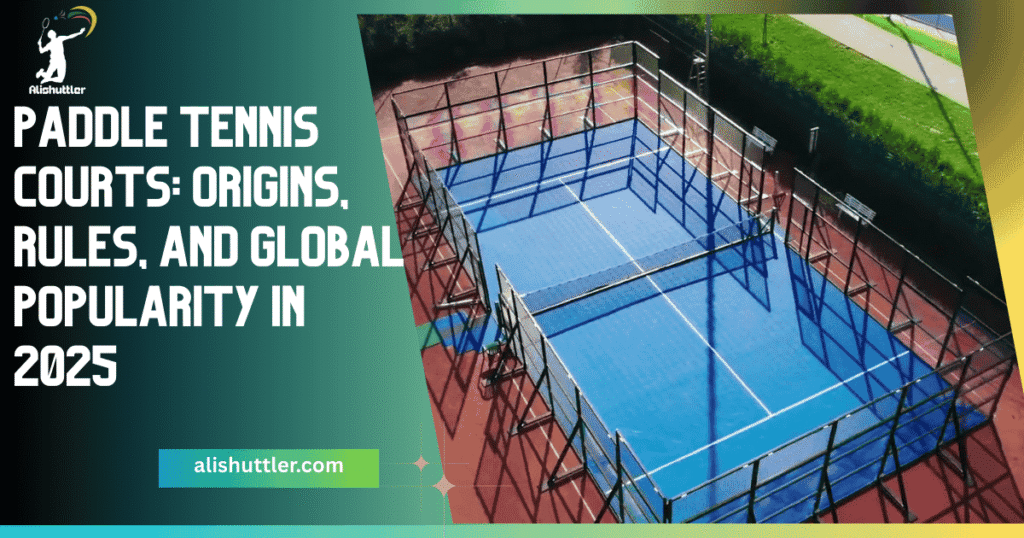
While only two universities have their own courts, some clubs utilize portable courts to access different neighborhoods or conduct pilot programs at schools and universities.
Final Thoughts on Paddle Tennis Courts
Paddle tennis courts deliver fast games, crisp strokes and tight scores. The smaller dimensions keeps players nimble and the action rapid. Constructed with reinforced mesh and clean lines, these courts can squeeze into just about any space urban parks, rooftops, or compact clubs.
More and more people are playing paddle tennis every year, from the major metropolises of Europe to emerging locations in Asia and across the American continents. Courts keep sprouting up as the sport expands. New players catch on quickly, and veterans remain hooked by the speed. To stay current on paddle tennis courts or to locate a venue, follow local club and sports group updates. Give it a taste and check out the pull for yourself.
Frequently Asked Questions
What are the standard dimensions of a paddle tennis court?
A typical paddle tennis court, measuring 20m x 10m, is designed for rapid games and is notably smaller than a traditional tennis court, enhancing the appeal of this racquet sport.
How is a paddle tennis court constructed?
Paddle tennis courts, often featuring a heated playing surface, are constructed with synthetic turf or concrete and surrounded by glass and metal mesh walls, enhancing the unique gameplay experience.
What equipment do I need to play paddle tennis?
You require a solid paddle, similar to a padel racket, a low-compression ball, and proper sports attire. The paddle is smaller and lighter than a traditional tennis racket, making it simple to use even for beginners.
Is paddle tennis popular worldwide?
Indeed, paddle tennis is exploding globally, especially popular in Spain, Latin America, and growing in Europe, Asia, and North America due to its social nature and accessibility on outdoor courts.
How does playing paddle tennis benefit your health?
Paddle tennis, a popular racquet sport, enhances cardiovascular health, coordination, and reflexes, while the diminutive padel court promotes mobility and camaraderie, making it a blast to play as exercise.
Can paddle tennis courts be used for other sports?
Although the majority of paddle tennis courts are designed for the sport, some rec centers may attempt to customize the space for other racquet sports. This would require adjustments to the net height and court lines.
What is the future of paddle tennis court development?
A great future ahead with padel courts being built worldwide. Material and tech innovations seek to make outdoor courts more sustainable and accessible to players of all abilities.
